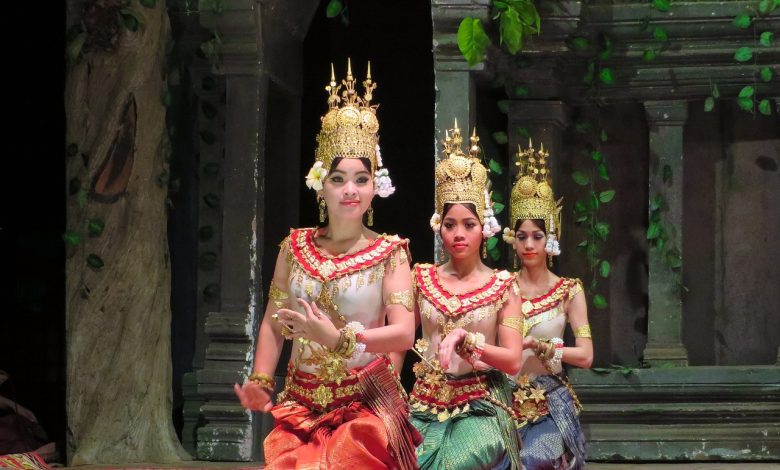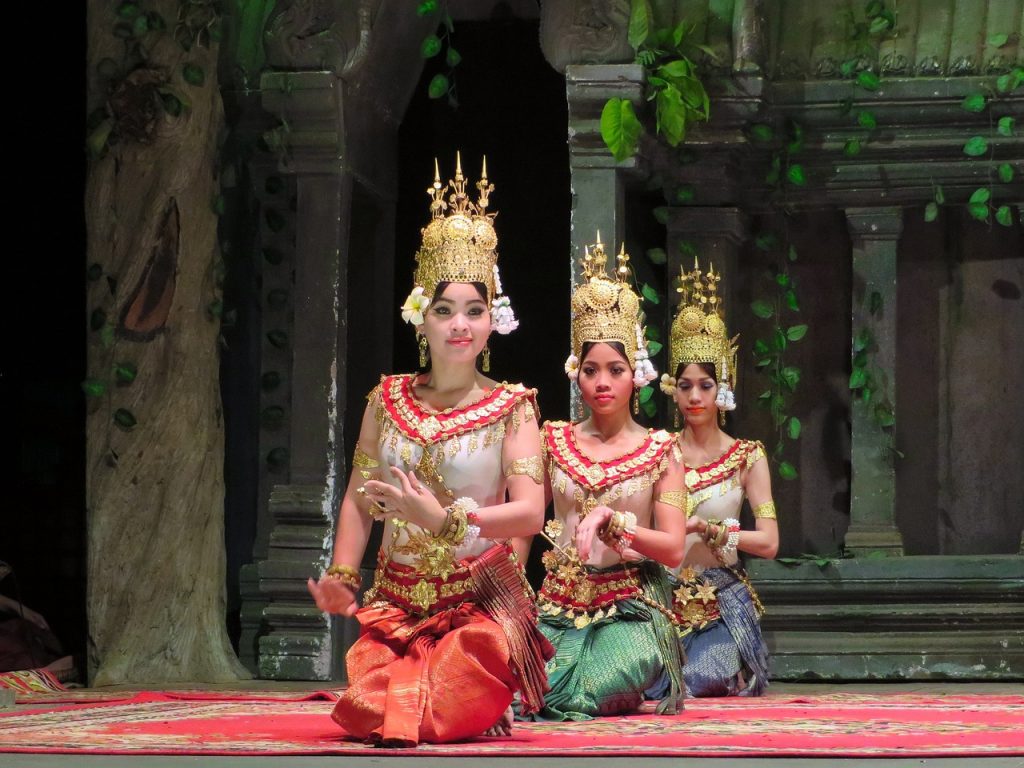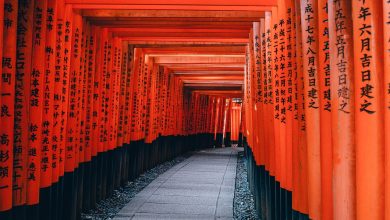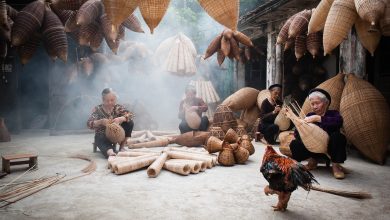Cambodia Travel Guide 2024: Itineraries, Top Places, and Beaches


Introduction
Cambodia, a Southeast Asian gem, offers an intriguing mix of ancient temples, lush landscapes, vibrant cities, and pristine beaches. This travel guide will help you navigate your way through Cambodia in 2024, providing detailed itineraries, must-visit destinations, and tips for a memorable trip.
Planning Your Trip
Best Time to Visit
Cambodia has a tropical climate with two main seasons: the dry season (November to April) and the wet season (May to October). The best time to visit is during the dry season when the weather is cooler and ideal for exploring the temples and beaches.
How to Get There
Phnom Penh International Airport (PNH) and Siem Reap International Airport (REP) are the main entry points. Both airports are well-connected to major cities in Asia and beyond. From the airport, taxis, tuk-tuks, and shuttle services can take you to your destination.
Visa Requirements
Most travelers can obtain a visa on arrival or an e-visa for a 30-day stay. Be sure to check the latest visa requirements based on your nationality before traveling.
Getting Around Cambodia
Public Transport
Cambodia’s public transport includes buses and shared taxis, which are affordable but can be crowded and less comfortable.
Tuk-Tuks and Motorbikes
Tuk-tuks are a popular and convenient way to get around cities. For more freedom, you can rent a motorbike, but ensure you have the proper license and experience.
Car Rentals
Car rentals are available, but driving conditions can be challenging due to traffic and road quality. Hiring a car with a driver is a more convenient option.
Top Places to Visit
Siem Reap
Angkor Wat: The crown jewel of Cambodia, this UNESCO World Heritage site is the largest religious monument in the world. Explore its intricate carvings and impressive architecture.
Angkor Thom: Once the capital of the Khmer Empire, this site includes the Bayon Temple, famous for its giant stone faces.
Ta Prohm: Known as the “Tomb Raider Temple,” Ta Prohm is enveloped by massive tree roots, creating a unique and mysterious atmosphere.
Phnom Penh
Royal Palace: The official residence of the King of Cambodia, the palace features beautiful Khmer architecture and lush gardens.
Tuol Sleng Genocide Museum: A sobering reminder of Cambodia’s tragic history, this museum is located in a former high school used as a prison during the Khmer Rouge regime.
Central Market: A bustling market housed in an art deco building, perfect for shopping and experiencing local life.
Sihanoukville
Serendipity Beach: The most popular beach in Sihanoukville, known for its lively atmosphere and beachfront bars.
Otres Beach: A quieter alternative to Serendipity, Otres Beach offers a more relaxed vibe and beautiful sunsets.
Ream National Park: Just outside Sihanoukville, this park features mangrove forests, wildlife, and pristine beaches.
Cambodia’s Best Beaches
Koh Rong
Long Set Beach: Also known as 4K Beach, this stretch of white sand and clear water is perfect for swimming and relaxation.
Sok San Beach: Located on the western side of Koh Rong, this beach offers a tranquil escape with fewer tourists.
Koh Rong Samloem
Saracen Bay: The main tourist area on the island, known for its crystal-clear waters and laid-back atmosphere.
Lazy Beach: A secluded spot on the western side of the island, ideal for those seeking peace and quiet.
Kep
Kep Beach: A small but charming beach known for its calm waters and beautiful views of the nearby islands.
Rabbit Island: A short boat ride from Kep, this island offers rustic charm, clear waters, and opportunities for snorkeling.
Unique Experiences
Exploring the Temples
Cambodia’s temples are a must-see. In addition to Angkor Wat, visit Banteay Srei for its intricate pink sandstone carvings and Preah Vihear for its dramatic cliffside location.
Visiting the Floating Villages
Experience the unique way of life in Cambodia’s floating villages, such as Kampong Phluk and Chong Kneas near Siem Reap.
Learning About Cambodian History
Visit the Killing Fields of Choeung Ek and the Tuol Sleng Genocide Museum to learn about the country’s history and the Khmer Rouge period.
Cooking Classes
Take a cooking class to learn how to prepare traditional Cambodian dishes like Amok (coconut fish curry) and Lok Lak (stir-fried beef).
Sample Itineraries
3-Day Itinerary
Day 1: Explore Siem Reap – Angkor Wat, Angkor Thom, Ta Prohm
Day 2: Visit the floating villages and Tonle Sap Lake
Day 3: Discover Siem Reap’s markets and enjoy a traditional Apsara dance performance
5-Day Itinerary
Days 1-3: Follow the 3-day itinerary
Day 4: Travel to Phnom Penh – Royal Palace, Tuol Sleng Genocide Museum
Day 5: Explore the Central Market and take a sunset cruise on the Mekong River
7-Day Itinerary
Days 1-5: Follow the 5-day itinerary
Day 6: Head to Sihanoukville – relax at Serendipity Beach
Day 7: Visit Otres Beach and explore Ream National Park
Accommodation Options
Budget-Friendly Stays
Cambodia offers many budget-friendly accommodations such as guesthouses and hostels. Popular options include Mad Monkey Hostel in Phnom Penh and Lub d Cambodia in Siem Reap.
Mid-Range Hotels
For more comfort, mid-range hotels like Mane Village Suites in Siem Reap and The Pavilion in Phnom Penh offer excellent amenities and service.
Luxury Resorts
Indulge in luxury at resorts such as Song Saa Private Island near Sihanoukville or Raffles Hotel Le Royal in Phnom Penh.
Local Cuisine
Traditional Cambodian Dishes
Sample local dishes such as Fish Amok, Lok Lak, and Nom Banh Chok (Khmer noodles). Cambodian cuisine is known for its fresh ingredients and bold flavors.
Best Restaurants in Cambodia
Top dining spots include Malis in Phnom Penh for upscale Cambodian cuisine, and Chanrey Tree in Siem Reap for a blend of traditional and contemporary dishes.
Food Markets
Explore food markets like Psar Chas (Old Market) in Siem Reap and the Russian Market in Phnom Penh for a taste of local street food and snacks.
Adventure Activities
Trekking and Wildlife
Cambodia offers great trekking opportunities, particularly in the Cardamom Mountains and Mondulkiri Province. Encounter wildlife such as elephants, gibbons, and exotic birds.
Diving and Snorkeling
Head to the islands of Koh Rong and Koh Rong Samloem for excellent diving and snorkeling spots with vibrant marine life and coral reefs.
Cycling Tours
Explore Cambodia’s countryside and temples on a cycling tour. Popular routes include cycling around Angkor Wat and through rural villages near Battambang.
Cultural Insights
Khmer Culture
Immerse yourself in Khmer culture by attending traditional dance performances, visiting local artisans, and participating in community-based tourism projects.
Festivals
Experience Cambodia’s vibrant festivals, such as the Khmer New Year in April, the Water Festival in November, and the Pchum Ben (Ancestors’ Day) in September.
Language Tips
While Khmer is the official language, many people in tourist areas speak English. Learning a few basic phrases in Khmer can enhance your travel experience and show respect to the locals.
Packing Tips
Essential Items
Pack lightweight clothing, a hat, sunglasses, and sunscreen. Don’t forget a reusable water bottle, insect repellent, and a good camera.
Weather Considerations
Cambodia’s weather is warm year-round, but bring a light jacket for cooler evenings and a raincoat or umbrella for the wet season.
Travel Gadgets
Bring a power bank, travel adapter, and waterproof bags to protect your belongings during outdoor activities.
Travel Tips
Staying Safe
Cambodia is generally safe, but take standard precautions like avoiding unlit areas at night, keeping an eye on your belongings, and following local advice.
Budgeting Your Trip
Cambodia is an affordable destination, but it’s important to budget for accommodation, food, transport, and activities. Plan ahead and take advantage of deals on local services.
Health and Wellness
Consider travel insurance, stay hydrated, and be cautious with street food if you have a sensitive stomach. Be aware of the risks of malaria and dengue fever in certain areas.
Sustainable Travel
Eco-Friendly Practices
Reduce your environmental impact by using reusable bags and bottles, avoiding single-use plastics, and supporting eco-friendly businesses and accommodations.
Respecting Local Wildlife
Observe wildlife from a distance and avoid feeding or disturbing animals in their natural habitat.
Supporting Local Communities
Shop at local markets, eat at family-owned restaurants, and participate in community-based tourism activities to support the local economy.
Conclusion
Cambodia is a destination rich in history, culture, and natural beauty. From the awe-inspiring temples of Angkor to the serene beaches of the southern coast, there is something for every traveler. Whether you’re planning a short visit or an extended stay, this guide will help you make the most of your Cambodian adventure in 2024. Embrace the warmth
of Cambodian hospitality, immerse yourself in its rich culture, and create unforgettable memories.
FAQs
What is the best time to visit Cambodia?
The best time to visit Cambodia is during the dry season from November to April when the weather is cooler and ideal for sightseeing and outdoor activities.
Do I need a visa to visit Cambodia?
Yes, most travelers need a visa to visit Cambodia. You can obtain a visa on arrival or apply for an e-visa online for a 30-day stay.
What is the main currency in Cambodia?
The main currency is the Cambodian Riel (KHR), but US dollars are widely accepted, especially in tourist areas.
Is Cambodia safe for solo travelers?
Yes, Cambodia is generally safe for solo travelers. However, it’s important to take standard precautions, such as avoiding unlit areas at night and keeping an eye on your belongings.
What should I pack for a trip to Cambodia?
Pack lightweight clothing, a hat, sunglasses, sunscreen, a reusable water bottle, insect repellent, a raincoat for the wet season, and a good camera.


